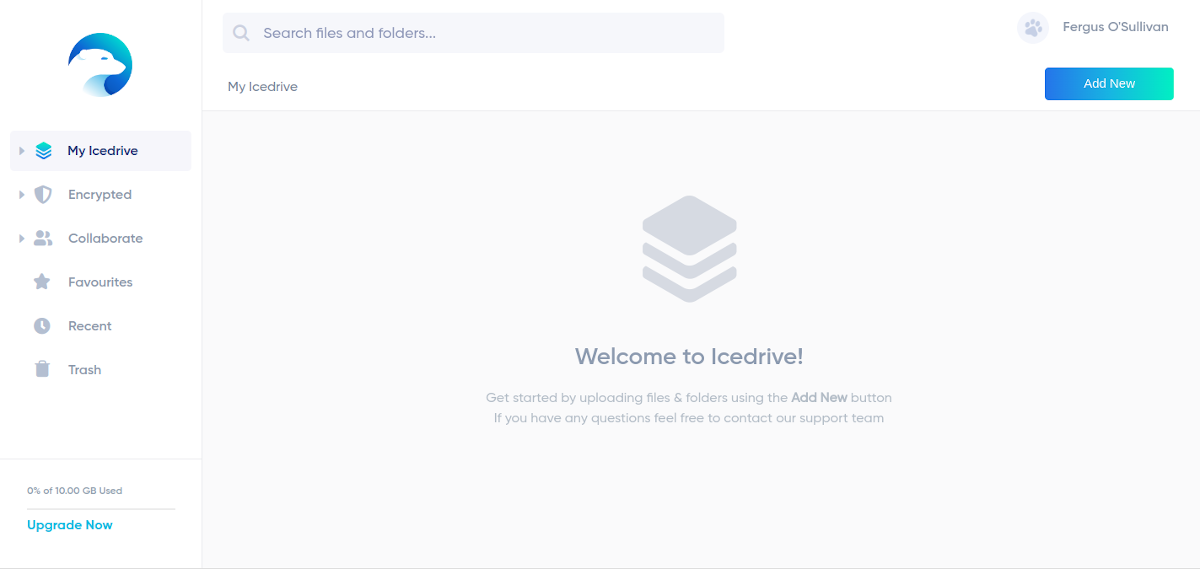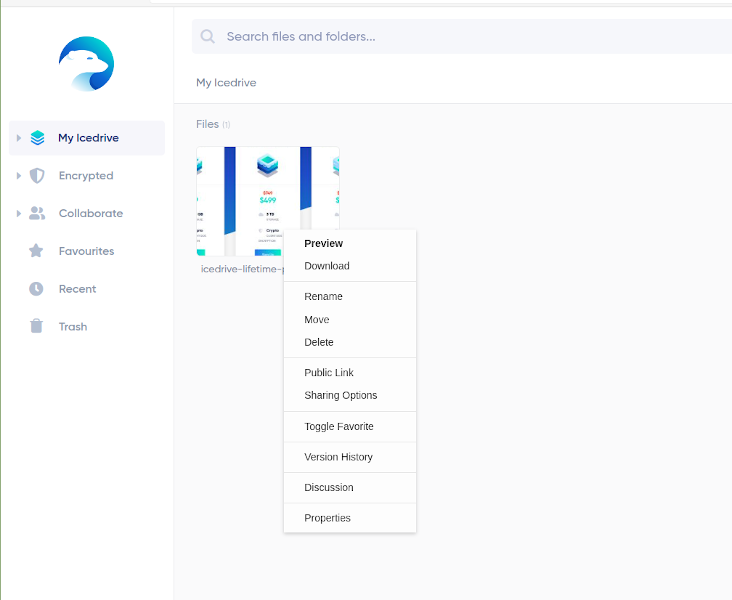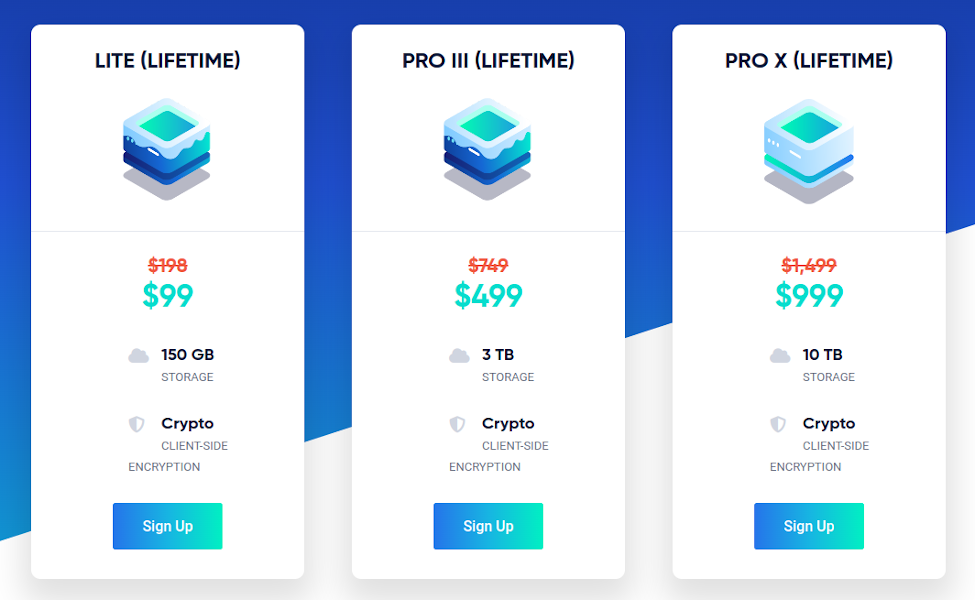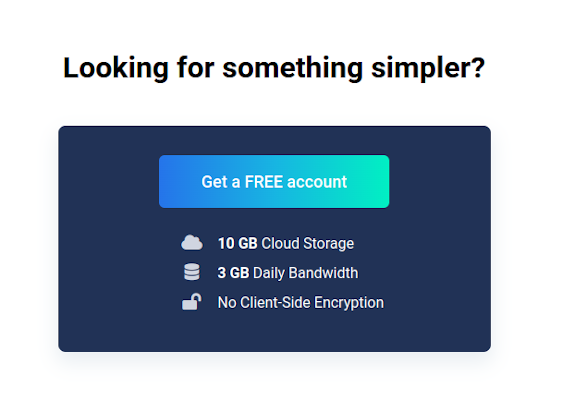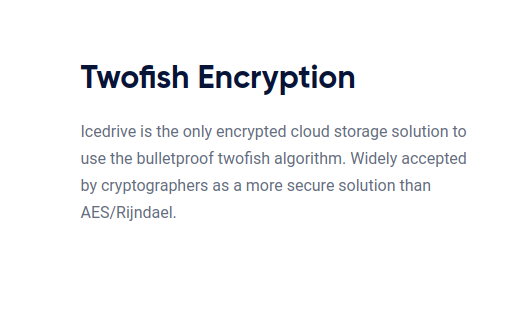Key Takeaways
- Icedrive is a newcomer to the cloud storage industry, but it has some fresh ideas that make it a strong contender among the best cloud storage services.
- Icedrive offers an excellent free plan, with 10GB of storage and an easy-to-use interface. It also provides advanced encryption for added security.
- The pricing of Icedrive’s paid plans may be a drawback for some users. However, its lifetime plans offer the best value and can help offset the higher costs in the long run.
UK-based Icedrive is a relative newcomer to the cloud storage industry, having been founded in 2019. Among grizzled veterans like Dropbox or IDrive, this makes Icedrive a fresh face, meaning it also has some fresh ideas. I decided to see how Icedrive’s approach works out.
Overall, I really like Icedrive, and it certainly has earned its spot among the best cloud storage services. Its biggest selling point for most will probably be its excellent free plan, though I also like its advanced encryption and easy-to-use interface. I’m not quite as sure about its pricing, though.


Icedrive
Icedrive VPN is fairly priced and offers great speeds and features. Plus, there’s a free option so you can try before you buy.
- Great free plan
- Easy to use
- Advanced encryption
- Best value is in lifetime plans
- No encryption on free plan
Using Icedrive
A big selling point for Icedrive is its simplicity. Using it is a matter of dragging and dropping, with the occasional right-click for specific functions. I always like it when a program fits this closely to its purpose; no frills, no externalities, just getting it done.
Like many other cloud storage services, Icedrive has three types of app: you can use it on the web using practically any kind of browser, via mobile on Android or iPhone/iPad, and on desktop on Windows, Mac, and even Linux. It’s one of the few cloud storage services with an app for Linux, so if you’re on Team Penguin, that’s something to keep in mind.
The web app is fairly comprehensive, and if you don’t need to sync files from your hard drive, it’s probably all you need. You drag files into it from your computer, they upload automatically, and that’s it, pretty much. You can create folders to help you stay organized, too, which is nice, and if you upload a folder, the structure should stay intact.
You manipulate a file by right-clicking it, and a contextual menu will pop up. Here, you can share the file, delete it, download it, and what have you. If you want to share the file, it will also appear in the “collaborate” section on the left-hand taskbar. This way, you can keep track of all files you’ve shared.
Finally, Icedrive lets you encrypt files at rest, meaning you put them in a special folder named “encrypted,” which makes it so that they can’t be touched except by anybody with the password. In practical terms, the differences between the regular folders and encrypted ones aren’t too big, but you can’t share encrypted files with others, so that’s something to keep in mind.
Icedrive Desktop App
If you’d prefer not to install any software, then Icedrive is a good option as its desktop app really only offers one extra over the web app—namely its sync folder. When you download Icedrive, it creates a folder on your hard drive that acts more or less like a virtual drive.
You can move files in and out of it as easily as with any other folder, but it sends and retrieves everything directly from the cloud without it taking up any hard drive space. It’s a neat feature, though it’s less unique than Icedrive claims; Dropbox and pCloud, to name but two, have similar features.
Pricing
When it comes to pricing, Icedrive has a lot to recommend. Though it’s not quite as cheap as IDrive—read our full IDrive review for more on that—it has some interesting offers that may make it worth the cost, particularly its lifetime plans. It also has one of the more generous free plans out there.
Icedrive offers the same features across all its paid plans—the free plan is an odd duck, as I’ll explain below—all that differs is the amount of storage you subscribe to and your payment intervals.
As you can imagine, going month-to-month is the most pricey but gives you flexibility, while the annual subscription is the best value in the relatively short term. The lifetime plans are the best value but require a large upfront payment; let’s see what all this looks like in a table.
|
Plan |
Monthly (calculated per year) |
Yearly |
Lifetime |
|---|---|---|---|
|
Lite (150GB) |
— |
$19.99 |
$99 |
|
Pro (1TB) |
$59.88 |
$49.99 |
$499 (3TB) |
|
Pro+ (5TB) |
$215.88 |
$179.99 |
$999 (10TB) |
Note that these lifetime prices are special offers. However, these have been on offer for a while now, so I’ll accept them as gospel until the service’s website is updated. The “real” prices are a good whack higher.
In my opinion, going month-to-month is only interesting if you need short-term storage. At $60 per year for 1TB, it’s just not worth it. The annual plan is a much better deal, offering you 1TB for $50 per year with the Pro plan or 5TB for $10, which is $36 per terabyte, for the Pro+ plan.
I have a feeling, though, that the Lite plan could be the most interesting option for many users, as 150GB is an awful lot of storage. With so many providers offering ever more huge amounts of storage space, it seems easy to forget that many of us likely won’t need several terabytes of storage.
These prices put Icedrive more or less in lockstep with the rest of the market. Sync.com, for example, offers plans for roughly these prices (though with some more interesting sharing options). That said, Icedrive is cheaper than Dropbox or MEGA, at least up to the 5TB mark, but more expensive than IDrive, which can go as low as $10 per TB on some plans.
Icedrive Lifetime Plans
Icedrive reserves its best value for its lifetime plans, which are a relatively new gimmick offered by only a few cloud storage providers—pCloud is another that springs to mind. When you sign up for a lifetime plan, you get exactly that: a plan that lasts your lifetime, or at least that of the company.
To make it even more attractive, Icedrive has upped the storage allowance on its lifetime plans, giving the Pro plan 3TB instead of 1TB and the Pro+ plan getting 10TB instead of 5TB. As a result, it’s a little tricky to directly compare the lifetime and annual plans, but I’ll take a stab at it, just enough to give you an idea.
As a general rule, you can state that the lifetime plans will start paying for themselves after about four to five years of use. The Lite plan is the perfect example: it’s five times as expensive when paying for life. Other plans aren’t quite as clear cut: you could argue that the Pro+ is worth it at two and a half years as it is five times the price, but for double the storage allotment.
Naturally, the biggest determiner when it comes to lifetime plans is if you have faith that the company will, in fact, last a lifetime. I can’t tell you the answer to that, but I have a feeling that a three to five-year bet should pay off.
Icedrive’s Free Plan
Finally, we come to Icedrive’s other big asset, its free plan. This tier offers 10GB, ranking it among the best free cloud storage services. Though some services offer more or better features, 10GB is an awful lot to offer, and all you need to do is scroll down Icedrive’s pricing page, click on “get a free account,” and you’re good to go.
As Icedrive explains, the free plan does not encrypt your data before sending it to the company’s servers. As such, I wouldn’t keep anything too sensitive there.
Privacy and Security
Looking over Icedrive’s marketing materials and legal documents posted on its site, I feel confident that Icedrive is a perfectly private and secure service. Regarding security, Icedrive likes to boast that it uses the Twofish encryption cipher, an evolution of the Blowfish cipher, which the company claims is better than the industry standard—AES.
A few Google searches and Reddit rabbit holes later, I can say with some confidence that this assertion isn’t entirely true. As one thread shows, opinions are still very much divided over whether Twofish is better than AES. That said, I will give Icedrive some leeway in its marketing here. At least the company isn’t spouting that tiresome “military-grade encryption” drivel we see with AES.
To further protect your files, Icedrive also secures your data before transfer, and when the files are on its servers, meaning even if they’re somehow intercepted, thieves won’t be able to make much of them. However, free users only get server-side encryption, meaning files are sent unencrypted. This shouldn’t be too big a deal, but I’d still recommend against sending sensitive materials on Icedrive’s free plan.
Icedrive Privacy
Privacy-wise, Icedrive also seems to have it together. The company’s privacy policy outlines what your data is and isn’t used for and is guided by U.K. privacy laws which are fairly thorough. On top of that, Icedrive is also GDPR-compliant, meaning you can request to have your data taken deleted, personal data isn’t sold, and more along those lines.
However, like most cloud storage services, Icedrive does comply with copyright law enforcement, meaning uploaded files are scanned for anything that breaches DMCA rules. This scanning is automated and anonymized, but it is something to remember. Alternatively, you could also not upload illegal materials.
Should You Subscribe to Icedrive?
Overall, there’s a lot to like about Icedrive, though some of its plans are a little on the pricey side. Still, if you have faith in the company, the lifetime plans defray a lot of those costs, and you should have made your money back in just a few years.
Even if you’re not too sure about paying for Icedrive, there’s always the excellent free plan, which may be one of my favorite ones out there. 10GB in an easy-to-use interface is a great offer, and you could use it to see how you like the service before paying for the premium plans. Whatever you choose to do, you can’t go wrong with Icedrive.


Icedrive
Icedrive VPN is fairly priced and offers great speeds and features. Plus, there’s a free option so you can try before you buy.


